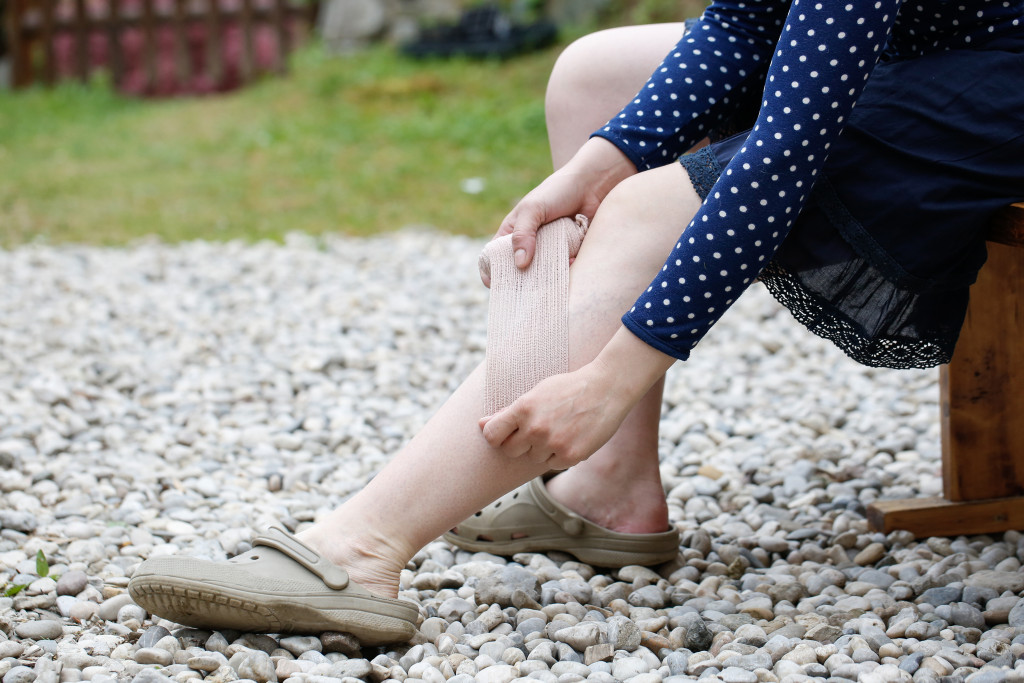- Be sure to closely monitor your symptoms to identify any indications of worsening venous insufficiency.
- To stay healthy, it’s important to exercise regularly and keep your weight within a healthy range.
- It is recommended to raise your legs when either sitting or lying down.
- To enhance blood circulation, it is recommended that you put on compression stockings.
Venous insufficiency is a condition that occurs when the veins in your legs are unable to return enough blood to your heart. This can cause swelling, pain, and other uncomfortable symptoms. If left untreated, it can lead to more serious health problems. Fortunately, there are steps you can take to manage venous insufficiency and reduce its effects on your life.
Monitor your symptoms.
When diagnosed with venous insufficiency, it is crucial to monitor your symptoms closely to recognize any potential signs of worsening the condition. Swelling is one of the most common symptoms of venous insufficiency, and if you notice your ankles are swelling, it could indicate that your condition is progressing.
If you experience any discomfort or pain in your legs or notice any skin color or texture changes, you must contact your doctor immediately. The early detection and treatment of worsening venous insufficiency can significantly improve your quality of life and prevent long-term complications. Monitoring your symptoms and seeking medical attention promptly is the key to managing venous insufficiency effectively.
Know how to manage your condition.
Knowing how to manage your condition is key to reducing the risks of complications. Here are some tips to help you better manage your venous insufficiency:
Exercise regularly and maintain a healthy weight.
Maintaining a healthy weight through regular exercise is crucial for individuals with venous insufficiency. This condition causes blood to pool in the veins, leading to painful ulcers, swelling, and other complications. Exercise helps control weight and increases blood flow, improving vein health.
Tailoring exercise routines to the individual’s physical capabilities is essential, considering any limitations caused by venous insufficiency. Moderate-intensity exercises such as walking, cycling, and swimming can help burn calories without putting undue pressure on the affected veins.
Exercise also helps with stress management and improving overall mental health, contributing to a healthy weight and reducing the risk of future complications. Regular exercise is an important self-care measure that can improve the quality of life for those with venous insufficiency.
Elevate your legs when you sit or lie down.
Elevating your legs is important in managing venous insufficiency, where the veins struggle to circulate blood back to the heart. Elevating your legs when sitting or lying down can reduce the pressure in your veins, allowing blood to flow more easily.
Proper elevation requires the legs to be raised above the level of the heart so that gravity can aid in blood flow. This position can also alleviate swelling and discomfort, helping you combat the symptoms of venous insufficiency. Prioritizing this step in your treatment plan is important to manage your symptoms and maintain your overall health.
Wear compression stockings to improve blood flow.
Properly wearing compression stockings is crucial for individuals suffering from venous insufficiency. These stockings apply pressure to the legs to aid the veins in circulating blood properly. When putting on compression stockings, it is important to ensure they fit correctly.
They should be snug but not too tight, impeding blood flow. Putting them on first thing in the morning before sitting or standing for prolonged periods is also essential. Experts recommend taking them off at night and elevating legs to help reduce swelling.
Additionally, individuals should replace their stockings every 3-6 months to ensure they are providing appropriate compression levels. By following these guidelines, individuals can effectively improve blood flow and alleviate symptoms associated with venous insufficiency.
Avoid long periods of standing or sitting still.
Properly managing venous insufficiency requires more than just medication. Those who suffer from this condition must also be mindful of their time standing or sitting still. This is because long periods of inactivity can exacerbate symptoms such as swelling and leg pain.
To avoid this, experts recommend taking frequent breaks to stretch and move the legs. Walking around or flexing and extending the feet and ankles can help improve blood flow and prevent blood from pooling in the legs.
Maintaining a healthy weight, wearing compression stockings, and elevating the legs when sitting or lying down can also help improve circulation and ease symptoms of venous insufficiency. By following these simple steps, those with venous insufficiency can manage their condition more effectively and enjoy a better quality of life.
Stay active.
Staying active is crucial for those suffering from venous insufficiency. It helps alleviate the symptoms of this condition by promoting blood circulation and reducing fluid retention. Walking is an excellent low-impact exercise that can easily be incorporated into one’s daily routine.
It can be done indoors or outdoors and at a pace that is comfortable for the individual. Swimming and water aerobics are also great options as they are easy on the joints and improve cardiovascular health. Taking the stairs instead of the elevator is another way to exercise throughout the day.
All these activities help manage venous insufficiency and have additional benefits like improved muscle strength and mental well-being. It is important to consult with a healthcare professional before starting any new physical activity.
These are some of the steps you can take to manage your venous insufficiency better. Remember, timely diagnosis and treatment are crucial for effectively managing this condition in the long run.


